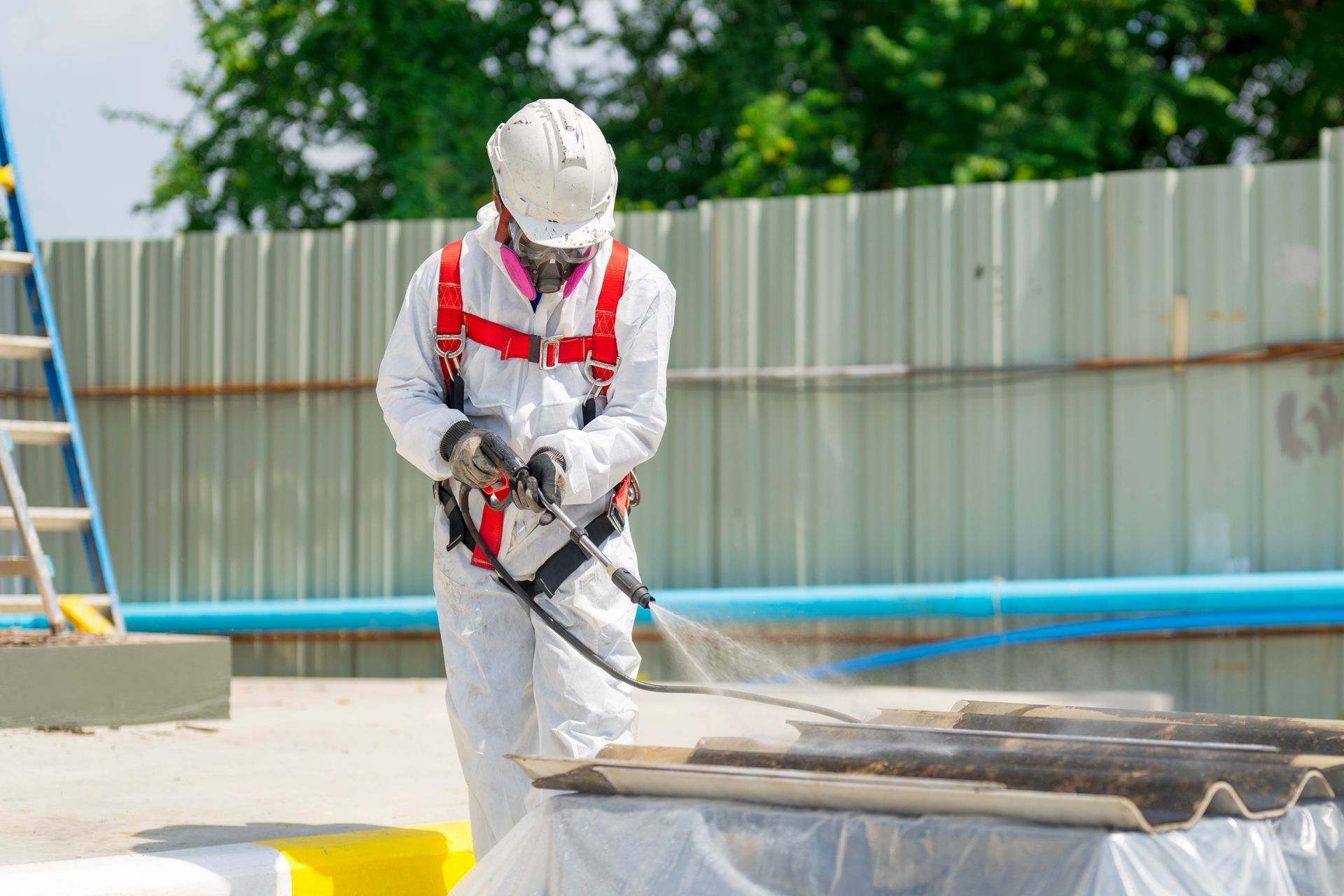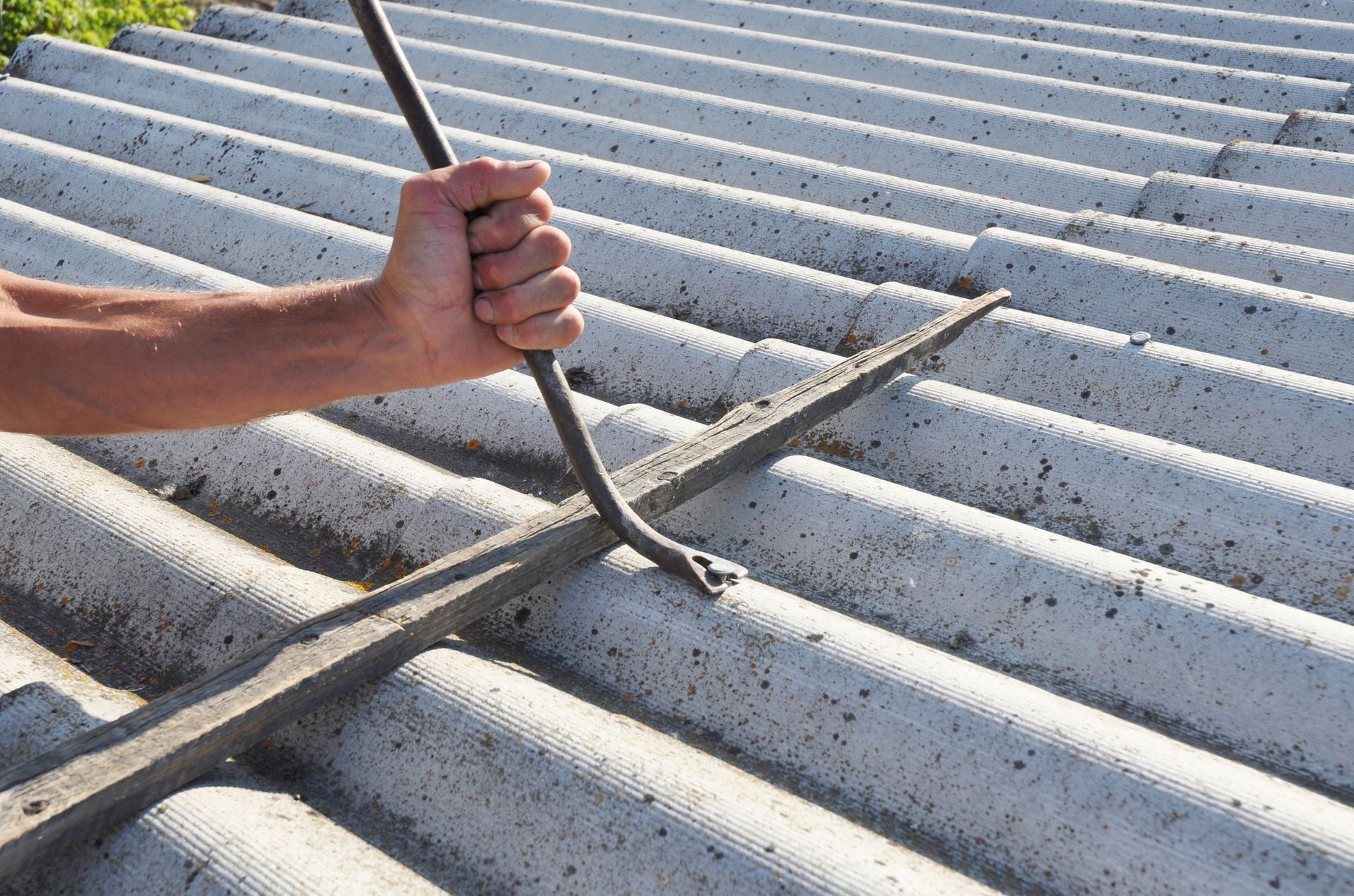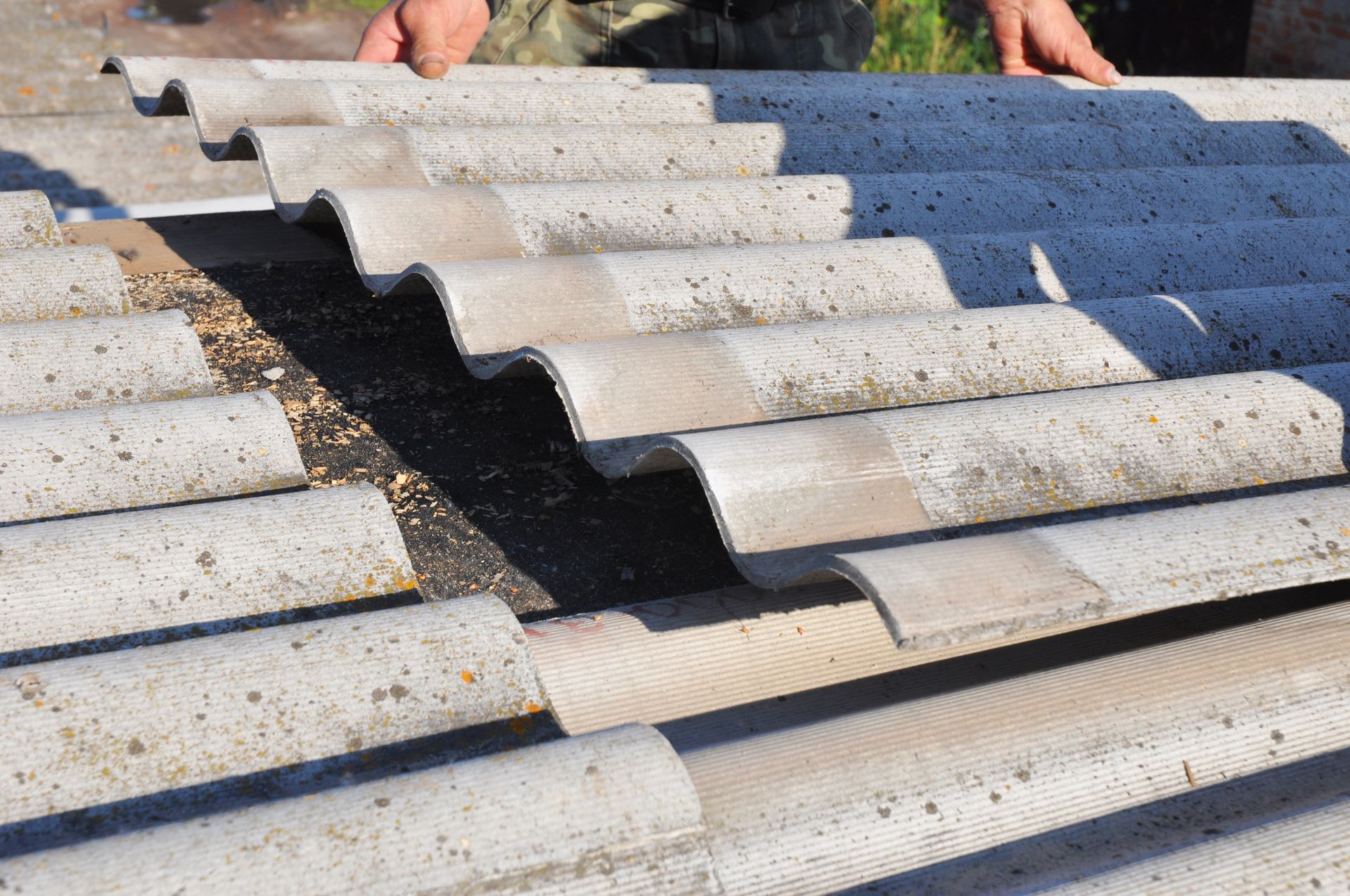Signs Your Surf Coast Property Needs Asbestos Roof Removal
If your roof is ageing or showing unfamiliar wear, it’s wise to consider professional advice before the next storm season. Geelong Asbestos Removals provides asbestos roof removal serving Surf Coast to help homeowners and business operators make sound, safety-first decisions with confidence.
Signs Your Roof May Contain Asbestos
Understanding what to look for can help you decide whether to seek testing and a formal assessment before any maintenance or upgrades.
In many Surf Coast suburbs, roofs installed prior to 1990 are more likely to contain asbestos. While appearance alone can’t confirm the material, certain visual cues often raise suspicion. If your roof’s sheeting looks like cement-based corrugated panels rather than modern metal or composite products, there’s a chance it may be asbestos. When such indicators are present, asbestos roof removal becomes a practical consideration to prevent accidental exposure during repairs or cleaning. Secondary materials such as ridge capping, eaves, or old flues may also be connected to the same legacy roof system, further heightening the need for careful inspection.
Spotting Corrugated Cement Sheets and Age Clues
Older properties across coastal towns frequently feature cement sheet roofing that resembles galvanised corrugated profiles but feels heavier and more brittle. This can be a hallmark of asbestos roofing installed decades ago, particularly in homes and sheds built between the 1950s and late 1980s. If your place was constructed or significantly renovated before 1990, the age alone is a signal to consider a licensed inspection. Any planned maintenance—such as replacing gutters or penetrations—shouldn’t proceed until materials are properly identified, because drilling, cutting, or pressure washing can release fibres. Where testing confirms asbestos, asbestos roof removal is the safest pathway to eliminate future disturbance and manage long-term risks around the property.
Weather Wear That Raises Red Flags
Surf Coast weather can be tough on roofs—salt-laden air, wind-driven rain, and intense sun exposure all contribute to deterioration. Brittle surfaces, flaking edges, cracked or crumbling sheets, and stained areas that don’t respond to gentle cleaning are common warning signs. These conditions can accelerate fibre release if the roof is disturbed. It’s particularly risky to walk on or pressure wash a roof that may contain asbestos, because fragile sheets can fail unexpectedly. In these scenarios, asbestos roofing becomes even more hazardous, and roof work should be postponed until a qualified assessment is completed. If confirmed, timely asbestos roof removal protects occupants, neighbours, and contractors by addressing the hazard before it worsens.
When to Act
A sensible time to act is when visible damage or planned renovations intersect with uncertainty about roof materials. If your roof requires repair, replacement, or solar installation, it’s prudent to verify what the roof is made from. Once asbestos is identified, removing it from your roof helps avoid accidental fibre release during future trades work. Acting ahead of renovation schedules can streamline approvals and ensure the project unfolds without last-minute surprises. In coastal environments, proactive removal can also reduce the chances of storm damage turning a manageable issue into an urgent, higher-risk response.
Delaying Removal: Hidden Risks and Rising Costs
Deferring action can increase both risk and cost over time. Damaged, weathered sheets may deteriorate faster, making containment and removal more complex. An otherwise straightforward asbestos roof removal project can become intricate if the roof starts to fail or if emergency patching is needed. Unplanned events—like branches falling, unauthorised access to the roof, or opportunistic wildlife nesting—can all escalate exposure risks and regulatory requirements. Delays also carry compliance implications: if building works must stop mid-stream for testing or emergency controls, labour and equipment costs can surge. In contrast, scheduling a planned removal keeps the programme organised, reduces safety hazards, and allows for orderly replacement with modern, compliant materials.
Residential and Commercial Roofs: Safety First in Surf Coast
Operating in the Surf Coast area, our team is equipped to manage both residential and commercial projects with the right controls for each environment. Homes often require coordinated access, careful protection of gardens and outdoor areas, and clear communication with occupants about daily movements. Commercial sites may need staged removal around business hours, traffic management, and separate zones for staff and public safety. In both settings, asbestos roof removal relies on methodical planning: isolating work areas, using approved equipment, and following strict procedures to minimise dust and prevent contamination of gutters, downpipes, and surrounding surfaces. This approach helps keep neighbours, workers, and the broader community safe throughout the process.
Testing, Compliance, and Responsible Disposal
Before any invasive work begins, sampling by a qualified professional is essential so that materials are confirmed by a laboratory. When asbestos is present, removal must comply with Victorian regulations, codes of practice, and local council requirements. The plan typically includes site setup, signage, barriers, and an environmental strategy to capture and control dust. Waste management is a core part of compliance. Removed sheets are carefully lowered, wrapped or double-bagged, labelled, and transported using licensed pathways to approved facilities. At completion, the area is cleaned, and documentation may include clearance reports and records of disposal. Thorough compliance ensures that asbestos removal doesn’t leave lingering issues and supports future property sales and insurance discussions.
What to Expect During an Asbestos Roof Removal Project
Most projects begin with a safety briefing and setup of exclusion zones. Access is arranged to minimise disturbance to daily routines, and work typically proceeds section by section. Fasteners are carefully removed rather than cut to limit dust, and sheets are lowered—not dropped—to prevent breakage. Gutters and downpipes may be cleaned or isolated to prevent debris spread. Once the roof area is cleared, the site is thoroughly checked, and any residual fragments are carefully collected. A well-run asbestos removal project focuses on control, containment, and clear communication—so occupants understand the timeline, milestones, and when it’s safe to reoccupy spaces beneath the roof. Planning replacement materials in advance can shorten downtime and help you transition to a durable, low-maintenance roofing system.
Budgeting and Planning Without Cutting Corners
Budget planning should balance safety, compliance, and long-term value. While it can be tempting to defer a major roof job, the cumulative risks rarely justify delays. Upfront testing clarifies scope, and accurate quotes allow you to align asbestos roof removal with roof replacement and any other planned works. Consider how timing interacts with weather—calmer seasons can be advantageous for site control. Professional project staging also makes a difference: bundling removal and replacement can reduce labour duplication and minimise temporary protection costs. Over the life of your property, removing hazardous materials and installing a modern roof can enhance comfort, reduce maintenance, and streamline future upgrades like solar, insulation, and ventilation.
Common Misconceptions That Can Put You at Risk
It’s a mistake to think a roof is safe simply because it looks intact. Asbestos-containing cement sheets can release fibres if disturbed—even during basic tasks like drilling, fixing antenna mounts, or cleaning lichen with abrasive methods. Another misconception is that small DIY repairs are harmless. In reality, even minor work on suspected asbestos roofing can become high-risk without controls, personal protective equipment, and disposal pathways that meet legal standards. When uncertainty persists, the safer route is to arrange testing, and if confirmed, plan asbestos roof removal with a licensed team so that health, compliance, and future renovation goals stay on track.
Preparing Your Property for a Smooth Project
A few simple steps can help the job run efficiently. Clear driveways and access points so vehicles and equipment can position safely. Keep pets and children away from the work zone, and discuss daily schedules with neighbours if access or traffic management is required. Avoid any roof maintenance or cleaning in the lead-up to testing or removal, as disturbance increases risk. If you’re planning new skylights, solar panels, or ventilation, share those plans early so the roof replacement can accommodate penetrations and layout choices. Thoughtful preparation supports a safer, quicker asbestos roof removal and a more seamless handover to the new roof.
Why Acting Sooner Protects Your Investment
Proactive decisions around roofing pay off. Removing hazardous materials before they fail reduces emergency call-outs, protects indoor spaces from leaks, and avoids the costs associated with unplanned shutdowns during renovations. For commercial properties, timely asbestos removal supports continuity by reducing the chance of unplanned closures and protecting staff and customers. For homeowners, it brings peace of mind and helps maintain the property’s value, especially when planning upgrades that depend on roof integrity. With a clear plan, you can move from risk to resilience—on your schedule rather than the weather’s.
Contact Us Today to Keep Your Property Safe!
The signs above can help you decide when professional testing and guidance are needed. For trusted advice and prompt action, call Geelong Asbestos Removals today on 0402 810 599 to arrange asbestos roof removal serving Surf Coast. Let’s make your home or business safer, compliant, and future ready with a well planned upgrade that doesn’t leave risk to chance.


